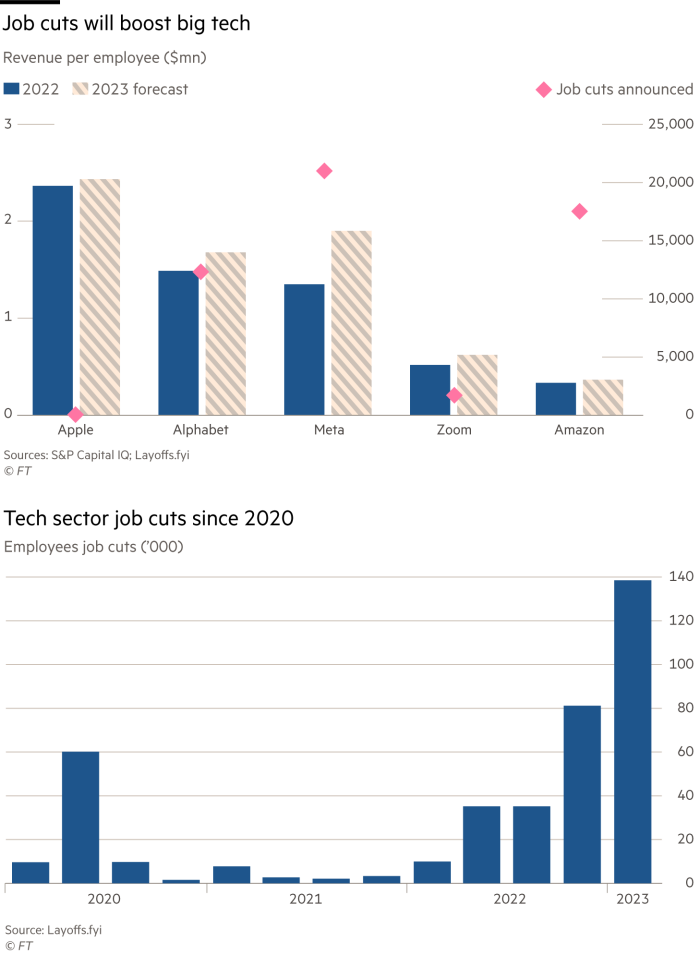The old tech question “how many programmers does it take to change a lightbulb?” has been superseded by “how many people are needed to run a tech company”. One popular answer to the latter is “fewer”.
Since buying Twitter, Elon Musk has jettisoned close to three-quarters of the workforce. So far, he cannot claim any great success. Advertising revenue is down and outages recur.
Twitter serves as an extreme example of what is possible. After years of employee expansion, tech is shrinking.
Tech companies in the US have announced close to 300,000 job cuts since last year, according to website Layoffs.fyi. Alphabet is dispensing with 6 per cent of its workforce, equal to some 12,000 people. Amazon has announced 18,000 job cuts. Meta is expanding its lay-offs programme. There is no pattern to where the axe falls. Twitter no longer has a press department. Amazon has reduced its Alexa voice assistant team.

Companies point to economic pressures. But some Silicon Valley natives believe workforces are simply too big. Investor and Musk acolyte David Sacks, for example, has called Twitter bloated.
One metric might support his case. Apple’s revenue per employee fell in 2022 compared with the previous year. Twitter’s dipped before it was purchased. Cutting workforces should increase this. Meta’s revenue per employee figure could rise by a third this year compared to 2022 and Amazon’s by a tenth.
Redundancies need to be seen in the context of previous breakneck expansion. Meta’s headcount at the end of last year was nearly 86,500. Its first round of lay-offs cut 11,000 jobs. The second will hit 10,000 workers. That would take the workforce of the US social networks group to about 65,500. This is still 20,000 more than before the pandemic began.
Founders who remember when their company consisted of a handful of friends working in a rented office bemoan the creep of middle management. Flat management is one response. This is supposed to drive innovation but can result in dysfunctional workplaces.
Canonically, no programmers are needed to screw in a lightbulb — it’s a hardware problem. But there is no right answer to tech company staffing. Headcount reductions improve profits per employee short term. Longer-term performance may deteriorate. Meta employees say job uncertainties have stopped some projects from completing. Taken too far, lay-offs reduce productivity.
Lex: a sum of the pars exercise
Please tell the FT’s flagship investment column what its priorities should be for its next 90 years by participating in our readership survey.







